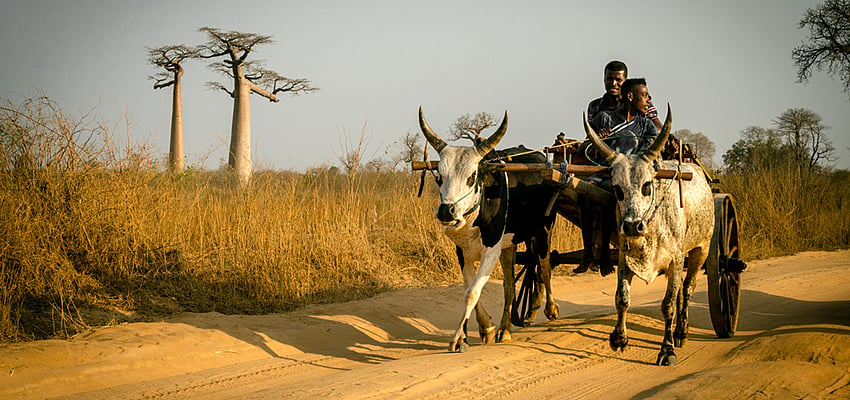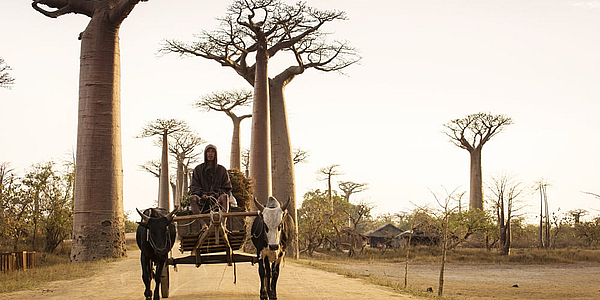


It is a symbol of wisdom, with its big horns and humped back, and an integral part of the landscape of Madagascar. In addition, according to legend, there are as many omby - the Madagascan name for the zebu - as there are people on the island! I hope you found this short explanation of the role of this animal in Madagascan daily life interesting and hope you'll be able to check it out for yourself when you're travelling in Madagascar!
As explained in another article, rice is a particularly important grain in Madagascar. Except that without zebus there would be no paddy fields or else there would be a huge amount of work. In fact, zebus are used to tread down the fields before the rice is planted out. When the ground is well and truly waterlogged, the farmers walk up and down the fields with one or two zebus to soften and prepare the soil for planting out the young rice seedlings. This work is much more effective when done by a zebu than by a human being and having tried it myself, I can confirm that!
The zebu is also used as an ecological means of transport. In a poor country where few people have motorised vehicles and where the price of fuel is unbelievable - about 1 euro per litre - the zebu often replaces the car. Hitched to a little cart and in exchange for a bit of grass, they carry the locals across the winding tracks in the bush, so need for petrol! I have to say that the zebu cart was my favourite means of transport when I went off to explore the bush. You see the landscape at a less frantic pace than in a four-wheel drive vehicle and it will make your trip much more memorable!

Zebus are also very important in Madagascan culture, where they are a visible sign of wealth. Owning one or - better still- a herd of zebu shows the success and social staus of the owner. In some ethnic groups, a boy only becomes a man when he has stolen his first zebu! Zebus feature in many ceremonies and have an important role in every stage in the life of a Madagascan. From birth to death, they feature in every ritual, even if that means that they are going to take centre stage...
For some ethnic groups in southern Madagascar and for the Bara, Antandroy and Mahafaly people in particular, the zebu is actually the object of a cult. When a Mahafaly man dies, his herd of zebus is sacrificed on the day of his burial. The skulls of the animals are then displayed on the deceased's tomb to show his importance and accompany him in the afterlife. The more zebus the better!
During the ceremony, family, friends and the inhabitants of the village are invited to share the meat of the sacrificed zebus at a great celebration. Here, there is no inheritance and children must create their own herd until their death, and so it goes on...